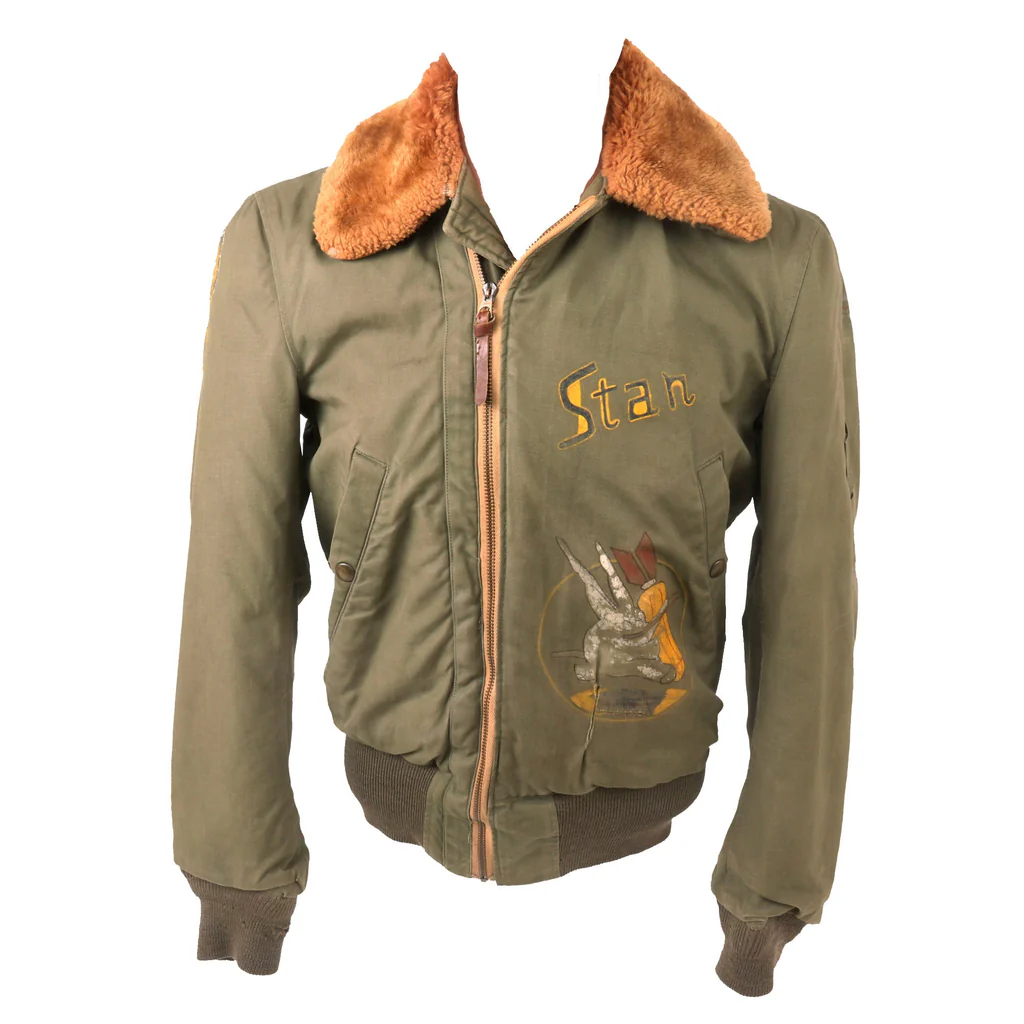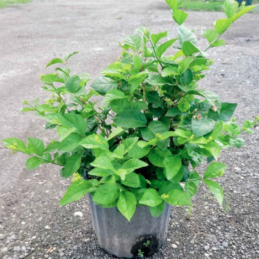Original U.S. WWII 398th Bomb Squadron 20th Air Force Painted B-15 Flight Jacket “Stan” – Size 34
$2,695.00
Original Item. One-of-a-Kind. This is a tremendous painted B-15 flight jacket worn by a “Stan” in the 398th Bombardment Squadron, 504th Bombardment Group, 20th Air Force. The front of the jacket has a heavily worn hand-painted 398th insignia, an elephant clutching a bomb in its trunk as it falls toward the Earth. The right sleeve of the jacket has a gorgeously-painted 20th Air Force insignia over Tinian, an island in the Northern Mariana Islands on which the 398th was stationed, at North Field. The B-15 flight jacket was manufactured with a synthetic shell, and had a mouton fur collar, wool knit waist, and knit cuffs. Its key feature was a pen pocket on the upper left sleeve.
The interior retains the tag below the collar:
TYPE B-15
SPECIFICATION 3220
SIZE…34
STOCK NO. 8300-470728
ORDER NO. (33-038)44-6343-AF
MODA COAT COMPANY
PROPERTY
AIR FORCES, U.S. ARMY
The paint is heavily worn on the front, but the squadron emblem is still discernable. The fur on the interior is well-retained, likewise on the collar. The snaps on all the pockets function, but some have verdigris, so be careful when opening them.
This is a tremendous jacket worthy
History of the 398th
Reactivated in March 1944 as a Boeing B-29 Superfortress Very Heavy bombardment squadron. When training was completed moved to North Field (Tinian) in the Mariana Islands of the Central Pacific Area in January 1945 and assigned to XXI Bomber Command, Twentieth Air Force. Its mission was the strategic bombardment of the Japanese Home Islands and the destruction of its war-making capability.
Flew “shakedown” missions against Japanese targets on Moen Island, Truk, and other points in the Caroline Islands and Marianas. The squadron began combat missions over Japan on 25 February 1945 with a firebombing mission over Northeast Tokyo. The squadron continued to participate in wide area firebombing attack, but the first ten-day blitz resulting in the Army Air Forces running out of incendiary bombs. Until then the squadron flew conventional strategic bombing missions using high explosive bombs.
The squadron continued attacking urban areas with incendiary raids until the end of the war in August 1945, attacking major Japanese cities, causing massive destruction of urbanized areas. Also conducted raids against strategic objectives, bombing aircraft factories, chemical plants, oil refineries, and other targets in Japan. The squadron flew its last combat missions on 14 August when hostilities ended. Afterwards, its B 29s carried relief supplies to Allied prisoner of war camps in Japan and Manchuria.
Squadron was largely demobilized on Tinian during the fall of 1945. Remained in Western Pacific, assigned to Twentieth Air Force. Moved to Clark Field in the Philippines in March 1946. Inactivated at Clark Field on Luzon on 15 June 1946; its low-hour aircraft flown to storage depots in the United States.
Vendor Information
- No ratings found yet!









Reviews
There are no reviews yet.